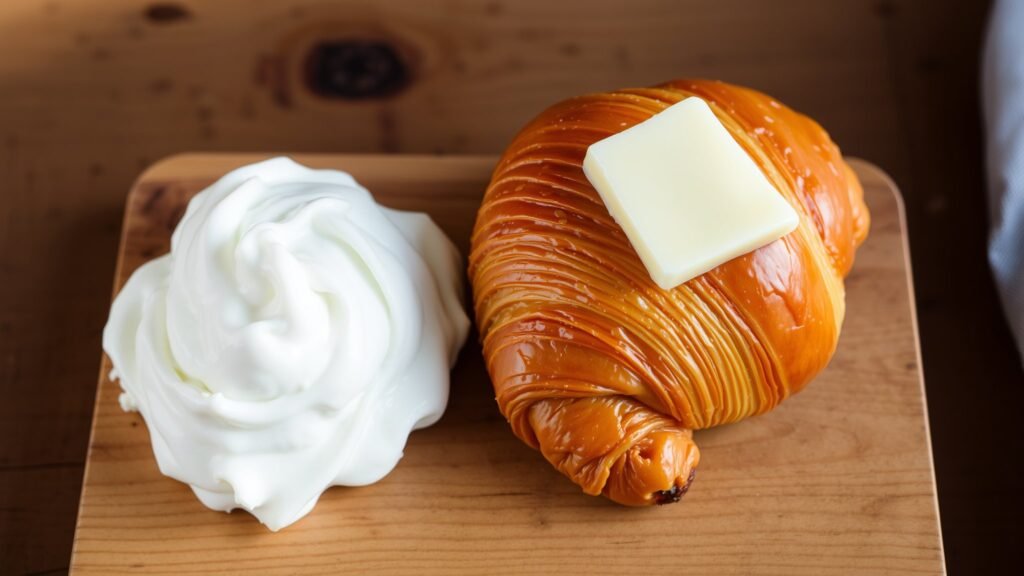081 -797-1912

Eat Good - Feel Good

Eat Good - Feel Good
Homemade croissants are a magical treat, with their flaky layers and rich, buttery goodness. When you bite into a warm croissant, the golden crust crackles, revealing tender dough inside. Serve them fresh from the oven, slathered with creamy butter and thick coconut cream for an indulgent experience. The enchanting aroma during baking will awaken your senses. If you’re enthusiastic to master the art of these delightful pastries, there’s much more to uncover about their creation.

There’s something magical about biting into a flaky, buttery croissant fresh from the oven. The moment you pull one from the oven, you’re met with a golden crust that cracks just right, revealing layers of tender, airy dough within. Making homemade croissants may seem intimidating, but with a few vital croissant techniques, you’ll find it’s a rewarding endeavor that results in a delightful pastry.
Experience the magic of biting into a freshly baked croissant, where golden layers of buttery dough await.
First, let’s talk about dough fermentation. This step is important and sets the foundation for your croissant’s flavor and texture. When you mix flour, water, yeast, and salt, you’re creating a beautiful dough that needs time to develop. Allow it to rise until it’s doubled in size, which typically takes about one to two hours. This fermentation process not only enhances your croissant’s taste but also guarantees it has the right structure.
You’ll want to knead your dough until it’s smooth and elastic, then let it rest. Patience is key here; don’t rush this part!
Once your dough has fermented, it’s time for the lamination process, which is where the magic truly happens. You’ll take chilled butter, form it into a flat rectangle, and encase it in your dough. This is where the classic croissant techniques come into play. Roll the dough out into a large rectangle, fold it over the butter, and roll it out again to create layers.
This requires precision, but with practice, you’ll get the hang of it. Each roll and fold doubles the layers, and that’s what gives croissants their signature flakiness.
After a few turns, let the dough chill in the fridge to keep the butter firm. Chilling is crucial—it prevents the butter from melting into the dough, allowing those lovely layers to form during baking. Once chilled, cut your dough into triangles, roll them up, and shape them into that iconic crescent form.
Allow them to proof until puffy; this final rise is vital for achieving that light, airy texture.
Now, the moment you’ve been waiting for: baking! Preheat your oven to a high temperature and let those croissants bake until they’re golden brown. The aroma wafting through your kitchen will be intoxicating.
Serve your homemade croissants warm, with a generous pat of butter and thick coconut cream for a rich, indulgent treat. You’ll find that every bite is worth the effort, making your homemade croissants a labor of love. Enjoy your freshly baked creations!
These croissants are best enjoyed fresh out of the oven with a cup of coffee or tea. You can also drizzle them with honey or serve them with a side of whipped cream for extra indulgence.
With their buttery, flaky layers and creamy filling, these croissants are sure to impress your family and friends. Try this recipe today and treat yourself to a delightful homemade pastry!
As you savor your homemade croissant slathered in rich butter and thick coconut cream, remember that “the proof of the pudding is in the eating.” Each flaky layer melts in your mouth, delivering a warm embrace that brightens your day. You’ve transformed simple ingredients into a delightful treat that speaks of care and craftsmanship. So, relish every bite and share this joy with loved ones, because good food is best enjoyed together.